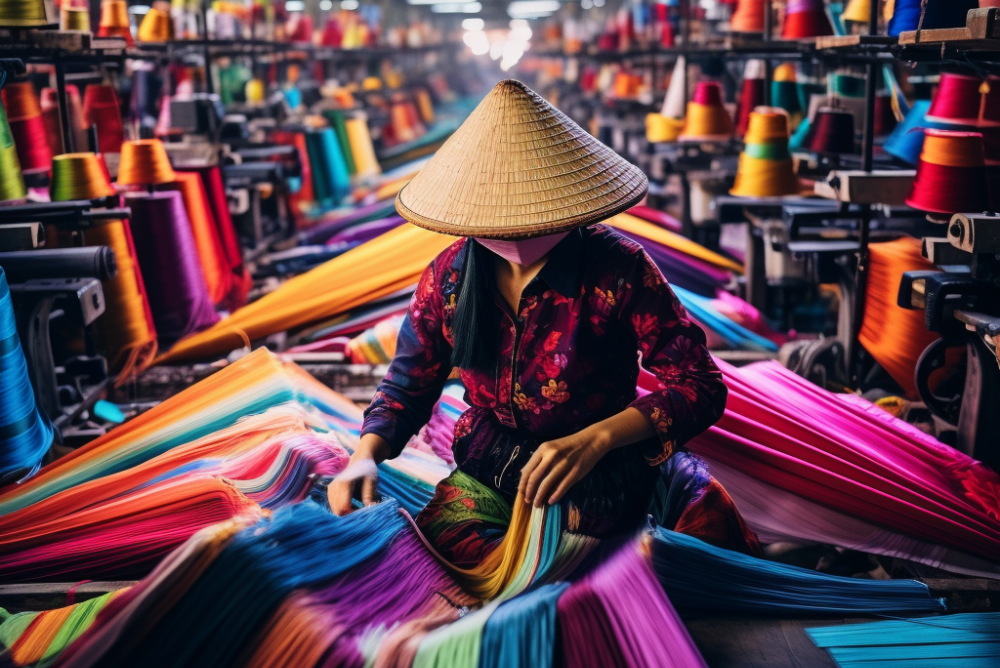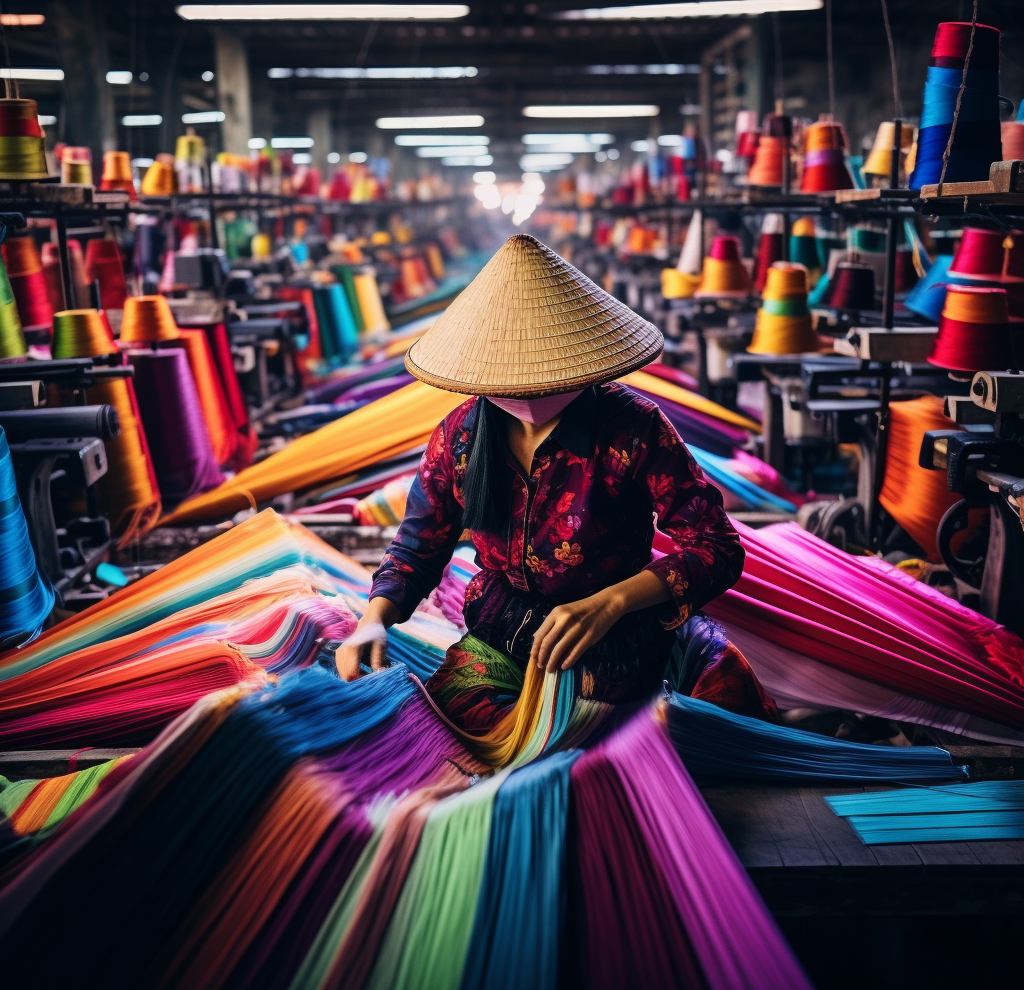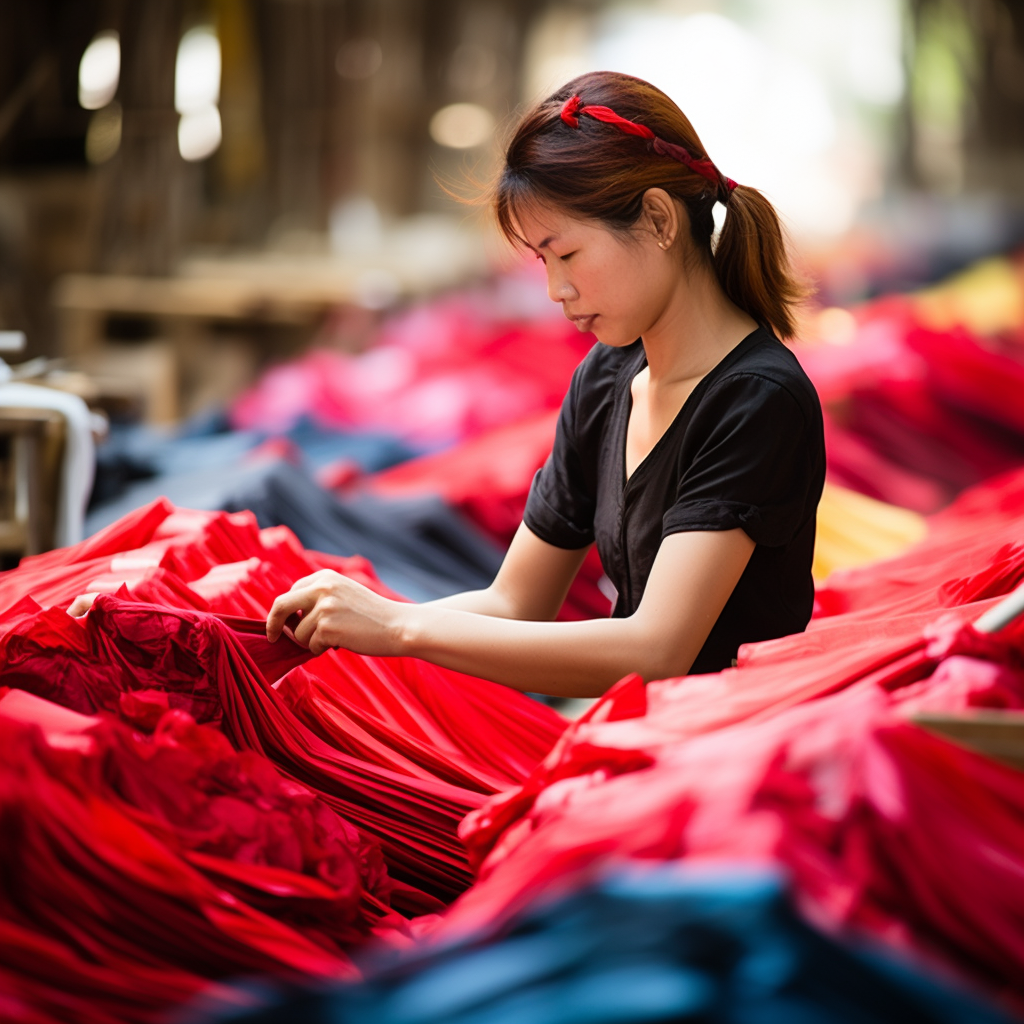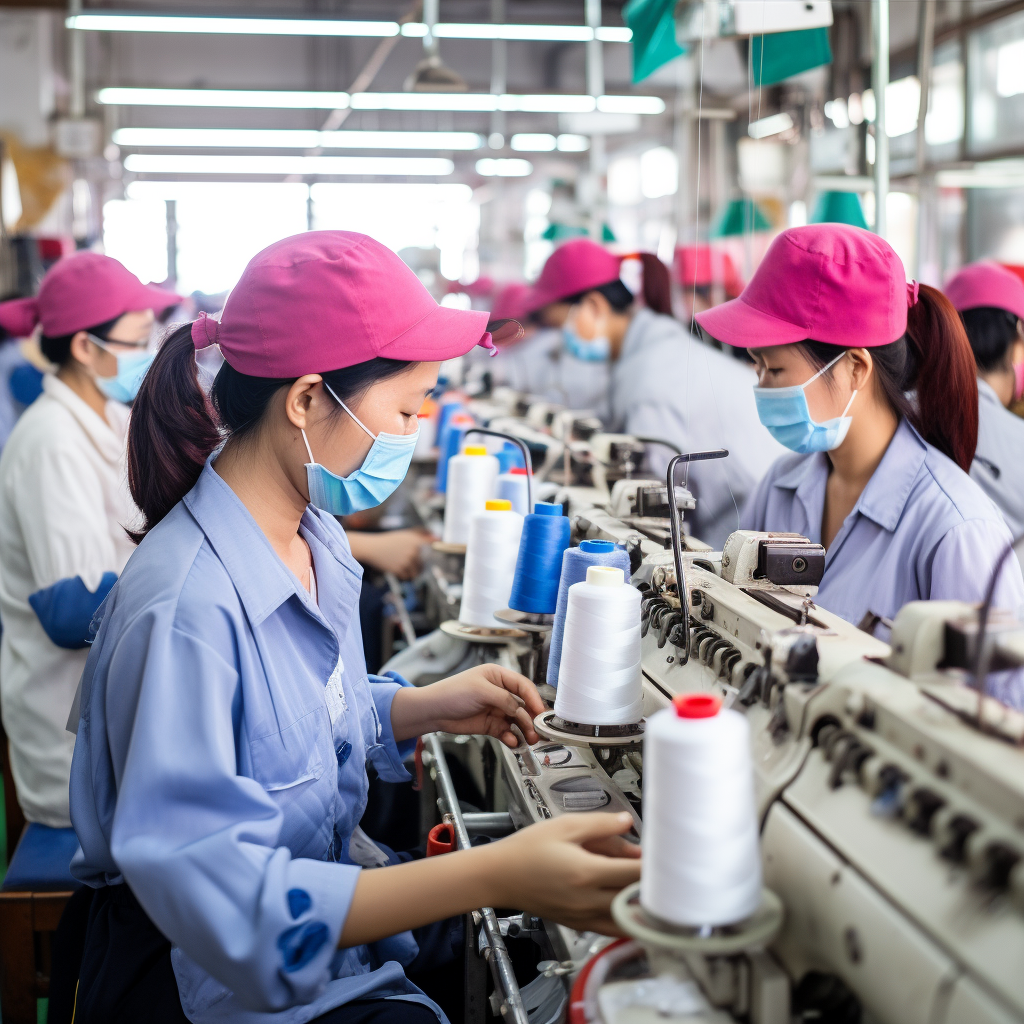Vietnam's Textile Industry: The Stunning Rise of an Asian Manufacturing Hub


Over the past two decades, Vietnam has rapidly emerged as a major player in the global textile and garment industry. From just $600 million in textile and garment exports in 2000, the country exported over $39 billion worth of textiles and clothes in 2018 . This meteoric rise has been fueled by Vietnam's competitive advantages in labor costs, trade agreements, proactive government policies, and geographic proximity to major textile importers like China.
Today, the textile and garment sector is a crucial pillar of Vietnam’s economy, accounting for 15% of the country’s total exports in 2017 . The industry employs around 2.5 million workers, making it one of the largest employers in the manufacturing sector . Garments comprise the majority of Vietnam’s textile and clothing exports, led by items such as T-shirts, trousers, shirts, and jackets.
Vietnam’s ascent as a textile powerhouse signals both opportunities and challenges ahead. By leveraging its strengths while addressing risks like environmental degradation and lack of domestic brands, Vietnam can solidify its position in the global marketplace. But rising competition from neighboring countries will pressure Vietnam to continue moving up the value chain into higher skilled manufacturing.
This article will analyze the key factors behind the meteoric rise of Vietnam’s textile and garment exports over the past two decades. It will also explore the opportunities and risks that will shape the future of this vital industry. From the competitive advantages that bolstered export growth to potential strategies for the road ahead, this article will provide an in-depth look at Vietnam’s growing textile and garment sector.
The Rapid Rise of Vietnam's Textile and Garment Exports
Vietnam’s textile and garment exports have skyrocketed over the past two decades, with compound annual growth rates of over 10% from 2000-2018 . In 2000, Vietnam exported just $600 million worth of textiles and clothing. By 2018, that figure had leapt to over $39 billion.
Several factors fueled this exponential export growth:
- Access to major markets through trade agreements: Vietnam joined the WTO in 2007 and signed free trade agreements with the EU, Japan, and South Korea. These deals reduced tariffs and gave Vietnamese textile and garment manufacturers greater access to major consumer markets.
- Low labor costs: Vietnam has competitive labor costs compared to China, with minimum wages around $130-150 per month in major cities as of 2018 . This motivated foreign companies to shift production from China to Vietnam.
- Strong government support: The Vietnamese government has introduced tax incentives, established special economic zones, and invested in infrastructure to attract foreign investment in the textile industry.
- Proximity to raw material suppliers: Vietnam imported over $16 billion in textile materials like fabrics, yarn, and fibers in 2018 . The country’s close proximity to major suppliers like China, South Korea, and Taiwan reduces transportation costs.
The majority of Vietnam’s textile and garment exports go to the United States (47%), European Union (17%), Japan (13%), and South Korea (11%) as of 2018 . Key items exported include T-shirts, trousers, shirts, and jackets. With continued growth expected in the coming decade, Vietnam seems poised to further solidify its status as a textile powerhouse.
An Attractive Environment for Textile Investment
Vietnam has emerged as an appealing destination for international textile and garment companies looking to establish manufacturing operations. The country's policies, labor force, and infrastructure create a favorable environment for investment in the textile industry.
Government Policies
The Vietnamese government has introduced various initiatives to attract foreign textile and garment manufacturers:
- Tax incentives like reduced corporate income tax rates, tax holidays, and import duty exemptions on equipment .
- Special economic zones with streamlined administrative procedures and enhanced infrastructure. Major textile zones include Da Nang, Hai Phong, and Ho Chi Minh City .
- Simplified customs clearance procedures to expedite imports of raw materials and exports of finished products.
- Bilateral and multilateral trade agreements that enable access to major consumer markets with reduced tariffs.
Competitive Labor Costs
Vietnam has relatively low labor costs compared to other textile production hubs. Minimum wages range from $130-150 per month in major cities like Ho Chi Minh and Hanoi as of 2018 . This is significantly lower than China's $350 per month minimum wage. The country also has a young population and large workforce.
Developing Infrastructure
Vietnam has prioritized infrastructure development to support its growing textile industry:
- New and upgraded ports, highways, and industrial parks to enable efficient transport of textile goods.
- Construction of concentrated textile production clusters.
- Expansion of energy availability to power textile factories.
With these advantageous conditions, Vietnam pulled in $17.6 billion in textile FDI between 2011-2017 . As the country continues enhancing its investment environment, it is expected to attract even more sizeable textile projects.

The Challenges Ahead
While Vietnam has made impressive gains in the textile sector, some risks and challenges lie ahead. As the country seeks to maintain its growth trajectory, it will need to address issues like rising competition, economic upgrading, and environmental impacts.
Growing Competition
Vietnam faces increasing competition from other textile exporting nations looking to boost their share in the global market:
- Bangladesh has emerged as a major garment exporter due to its low labor costs. Textile exports grew from $19 billion in 2011 to $40 billion in 2018 .
- Cambodia, Myanmar, and Ethiopia are attracting foreign textile companies with tax incentives, cheap labor, and improving infrastructure.
- China continues to be dominant in higher value-added segments like silk and technical textiles.
This rising competition could erode Vietnam’s share of apparel imports in major consumer markets.
Moving Up the Value Chain
While garment manufacturing propelled Vietnam’s export growth, reliance on cut-make-trim operations results in low value addition. The country will need to move up the value chain into activities like fabric production, branding, and design. This requires attracting investment in more advanced technologies.
Environmental Concerns
Water pollution is a major concern, as textile dyeing and treatment generate significant wastewater. Air pollution from dust and greenhouse gas emissions from factories is also an issue . As global fashion brands emphasize sustainability, Vietnam will need to adopt cleaner production technologies.
By addressing these challenges proactively, Vietnam can solidify a strong and sustainable position in the global textile and apparel industry.
The Future of Vietnam's Textile and Garment Industry
Looking ahead, Vietnam’s textile and garment sector faces both opportunities and risks. By capitalizing on emerging trends and proactively addressing challenges, the country can build on its rapid growth in this industry.
Opportunities in High-Value Segments
Vietnam has the opportunity to move into more specialized, high-value textile segments:
- Technical textiles used in construction, agriculture, healthcare and more. Vietnam has already seen some investment in this area .
- Environmentally friendly textiles utilizing recycled materials and cleaner chemistry. This aligns with global fashion’s sustainability focus.
- High-quality fabrics and materials like silk, wool, and synthetic fibers.
Capturing higher value-added activity would boost revenues and competitiveness.
Technology and Automation
Adopting advanced technologies can improve productivity, quality, and consistency:
- Automated cutting, sewing, and finishing technologies can enhance precision and efficiency.
- Digital solutions like 3D design and demand forecasting analytics enable quicker development cycles.
- Technologies like waterless dyeing and laser treatment reduce environmental impact.
Investing in sophisticated technologies requires significant capital but promises long-term gains.
Building Domestic Brands
Currently Vietnam produces mostly for export under foreign labels. Nurturing domestic fashion brands would capture more value and lend uniqueness:
- Indian and Chinese companies have found success with their own labels like Shanghai Tang.
- Domestic brands would need help on design, marketing, and branding.
Overall, Vietnam is well-positioned to navigate these shifts in the global textile landscape. With continued policy support and private sector investment, the country can unlock new opportunities on the road ahead.

Conclusion
In just a few decades, Vietnam has ascended from a fledgling player to a textile and garment powerhouse. The country’s exports grew from just $600 million in 2000 to over $36 billion in 2017, at compound annual growth rates exceeding 10% .
Several factors catalyzed this rapid growth trajectory. Vietnam’s competitive labor costs, trade agreements, proximity to raw material suppliers, and supportive government policies created an attractive environment for international textile companies. Foreign investment and operations surged, turning Vietnam into a manufacturing hub for labor-intensive apparel items.
Major challenges lie ahead as Vietnam seeks to maintain momentum. Rising competition from other emerging textile exporters will pressure the country to continue enhancing productivity and moving up the value chain into higher skilled manufacturing. Attracting investment into more technologically advanced production, as well as nurturing domestic fashion brands, will be key steps.
Meanwhile, the textile industry’s environmental impacts pose risks that must be carefully managed through cleaner production technologies. Sustainable growth will require balancing competitive strengths with responsible practices.
The meteoric rise of Vietnam’s textile exports illustrates how the right conditions and policies can transform a nation into a global player within a single generation. As Vietnam adapts to changing market forces and new opportunities emerge, the country appears poised to strengthen its position in the world’s textile and garment trade. With continued strategic development of this vital industry, Vietnam’s prospects for long-term economic growth look bright.





-500x500.jpg)
-500x500.jpg)
-500x500.jpg)
-500x500.jpg)
-500x500.jpg)